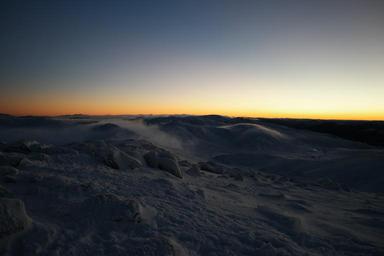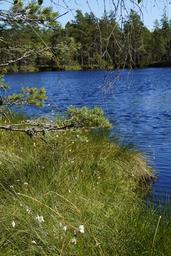Urban decay is a fascinating yet melancholic subject that has captured the imagination of photographers worldwide. The juxtaposition of beauty and desolation creates a haunting aura, drawing viewers into a world where time stands still. This phenomenon, often explored through the lens, serves as a reflection of societal change, abandonment, and the inevitable passage of time.
In this article, we delve deep into urban decay's captivating elements through various photographic techniques and styles. From tunnel photography to self-portraits in forgotten spaces, we will explore how photographers navigate these liminal worlds and the stories they tell through their imagery.
Urban Decay in Photography
Urban decay signifies more than just dilapidated buildings; it embodies a narrative rich with history and emotion. When viewed through the lens, it presents an opportunity for visual storytelling that resonates with many.
Capturing Forgotten Spaces
When wandering through abandoned structures, one might feel transported to another era. These forgotten spaces become canvases for photographers eager to capture their raw beauty. The textures of aged surfaces contrast sharply with modernity, evoking nostalgia and reflection.
The Allure of Aged Surfaces in Photography
Aged surfaces often exhibit murky tones that invite exploration. Photographers frequently highlight these textures to emphasize decay’s beauty. Each crack or peeling paint tells a story—one of neglect but also resilience. By focusing on these details, photographers can evoke feelings of melancholy intertwined with appreciation for the past.
The Role of Murky Tones in Urban Decay Photography
Murky tones play a crucial role in setting the mood within urban decay photography. They add depth and complexity while enhancing the emotional resonance of an image. When capturing scenes filled with shadows and light interplay, these tones can foster an introspective mood that invites viewers to contemplate their own experiences.

Creating Atmosphere Through Color Palettes
Color palettes significantly impact how urban decay is perceived in photography. Earthly hues can ground images in reality while invoking warmth amidst cold steel structures. Conversely, cooler tones contribute to an eerie stillness—perfect for capturing that haunting beauty inherent in decaying environments.
Exploring Liminal Worlds in Photography
Liminal spaces are transitional areas that exist between two states—often characterized by an eerie sense of detachment or dislocation. Photographers have found immense value in exploring these realms.
Understanding Liminality Through Visual Narratives
Liminality is all about traversing boundaries—both physical and metaphorical. In urban decay photography, this concept translates into capturing moments where past meets present; where vibrancy fades into neglect.
Transitional Spaces: Where Stories Unfold
Transitional spaces such as corridors or stairwells often serve as focal points for photographers seeking to illustrate movement between worlds. These compositions evoke curiosity about what lies beyond them—prompting questions about life’s impermanence.
Tunnel Photography: Journey Through Darkness
Tunnel photography embodies a unique aspect of urban decay—a literal journey through darkness leading to unexpected discoveries on the other side.
Embracing Dark Walls and Shadowy Reflections
Dark walls within tunnels help create an immersive atmosphere where shadow becomes character itself. By utilizing backlit subjects against these stark backgrounds, photographers can enhance dramatic tension while showcasing enigmatic figures emerging from obscurity.

Reflective Puddles: Nature's Mirrors
After rainfall, reflective puddles transform urban landscapes into surreal scenes full of depth and intrigue. These natural mirrors provide opportunities to capture fleeting moments where reality blurs with illusion—a hallmark characteristic seen throughout urban decay photography.
Self-Portraiture Amidst Urban Decay
Self-portraiture allows photographers to insert themselves into narratives woven throughout decaying environments.
Character in Shadow: Merging Identity with Setting
Capturing oneself against vibrant yet crumbling backdrops invites viewers deeper into personal interpretations surrounding identity and place. Utilizing long coats or hats can lend an air of mystery while emphasizing solitude amid overwhelming surroundings—inviting contemplation on one’s hidden journey within society’s forgotten corners.
Contemplative Spaces: Reflecting on Existence
Photographers often seek out contemplative spaces filled with atmospheric portraits—they resonate deeply due to their universal themes concerning existence itself amidst chaos brought forth by urban decay.
Moody Aesthetics: Creating Emotional Resonance
The moody aesthetic prevalent in urban decay photography serves as both an artistic choice and emotional catalyst for viewers drawn toward its haunting beauty.
Ethereal Atmosphere Through Composition Techniques
Cinematic feels achieved via careful composition techniques enable artists to convey narratives steeped in surrealism—whether it be through framing https://telegra.ph/Artistic-Approaches-to-Modern-Home-Decoration-12-20 shadowy reflections or emphasizing abstract forms created by crumbling architecture around them.
Fleeting Moments Capture Life's Transience
By focusing on fleeting moments within decayed settings—be it passing clouds casting shadows across aged surfaces or soft twilight tones blanketing forgotten streets—photographers evoke existential reflections about life itself amidst impermanence becoming tangible through visual storytelling methods employed therein.
Visual Storytelling Within Forgotten Places
Visual storytelling thrives when intertwining personal experiences with broader societal themes prevalent within neglected environments teeming with history waiting patiently beneath layers upon layers waiting patiently beneath layers upon layers waiting patiently beneath layers upon layers waiting patiently beneath layers upon layers waiting patiently beneath layers upon layers waiting patiently beneath layers upon layers waiting patiently beneath layers upon layers waiting patiently beneath layers upon layers waiting patiently beneath layers upon layers waiting patiently beneath layers upon layers…
Evocative Textures as Narrative Devices
Textures found throughout decaying structures serve not only aesthetic purposes but also narrative ones—their tactile quality inviting physical touch while simultaneously inspiring emotional responses tied closely interwoven together like threads composing intricate tapestries revealing glimpses insight into lives once lived here now faded away leaving behind echoes memories hauntingly lingering still echoing softly whispering gently reminding us never forget…
Atmospheric Portraits: Capturing Human Emotion
Atmospheric portraits breathe life back into otherwise lifeless settings—they humanize places steeped heavily enveloped dark histories shrouded mystery inviting engagement dialogue challenging assumptions preconceived notions about what constitutes true beauty hidden depths often overlooked initially perceived merely surface level appearances more profound meanings lie just below surface begging exploration understanding…
Hidden Journeys Within Urban Landscapes
Hidden journeys unfold within every crevice nook corner cranny awaiting discovery revealing stories long untold whispers carried breeze echoing softly among overgrown weeds sprouting between cracks pavement crumbling bricks standing guard silently watching passage time shifting sands lost forever perhaps never return again…
Immersive Compositions That Invite Exploration
Creating immersive compositions involves skillful manipulation perspective framing elements surrounding subjects guiding viewer's eyes towards focal points allowing them experience journey vicariously alongside artist witnessing unfolding mysteries unraveling gradually revealing insights previously hidden plain sight beckoning curious spirit onward ever deeper delve realms unexplored before…
Existential Reflection Amidst Ruins
Ruins compel us confront uncomfortable truths reminding us mortality inherent fragility life itself intertwined delicate dance existence ephemeral nature all things eventually fade away leaving behind traces indelibly imprinted collective consciousness shaped myriad experiences shared countless individuals encountered along way forging connections transcending barriers age culture geography uniting humanity shared aspiration seek meaning purpose fulfillment even midst chaos uncertainty present moment shining bright illuminating path ahead beckoning forward uncharted territories await discovery…
FAQ Section
What is urban decay?
Urban decay refers to the process by which previously functional urban areas fall into disrepair due to neglect or economic downturns.
Why is urban decay significant in photography?
Urban decay offers photographers a chance to explore themes like nostalgia, loss, resilience, and societal change—all rich subjects for visual storytelling.
What techniques enhance moody aesthetics in photos?
Techniques such as playing with shadow/light contrasts, utilizing murky earthy tones, or embracing atmospheric conditions can significantly enhance moody aesthetics.
How does tunnel photography relate to urban decay?
Tunnel photography captures transitional spaces that embody both movement and stagnation—highlighting contrasts between life’s journeys amid forgotten ruins.
Can self-portraiture work well within decayed environments?
Absolutely! Self-portraits set against urban decay allow artists to express personal narratives intertwined with broader themes surrounding identity place memory.
What emotions are commonly evoked through images depicting urban decline?
Images often evoke feelings ranging from melancholy nostalgia introspection curiosity wonder—all encouraging audience engagement contemplation deeper meaning derived imagery presented before them…